If a pin is labelled N/C by a manufacturer then this almost always means that it should be NOT CONNECTED to anything.
ALL standard 8 pin xx555 timer IC have NO NC pins.
ALL pins have an assigned role.
Some should be left open circuit in some designs - but that is done as part of the design, as required.
Finding an NE555FE datasheet proved wondrous hard.
This page shows NE555FE and NE555F.
http://pdf1.alldatasheet.com/datasheet-pdf/view/17984/PHILIPS/NE555F.html
The NE555FE shown is a standard 8 pin package pinout and has NO NC pins.
The NE555F is an abomination which I have never seen before and which I did not know existed. If you have such an IC you should drive a stake through it's heart, wrap it in garlic, bury it at the nearest cross roads and/or send it to a local technology museum. I would also love a sample for my museum.
If you had one of these and insisted on using it then leaving the NCs disconnected would be safest. But, I'd advise using one of the many many many other 8 pin ones as this is an orphan.

I have seen pins which are labelled NC on a device's datasheet but which DO have internal connections. In some cases, connecting such to ground or supply is 'fatal'. Some modern LEDS have metallic connections on their thermal pad which MUST NOT be connected as if they were LED Cathode or Anode, as they are neither, but are not electrically isolated. Doing this seems very very unwise, but it's done.
